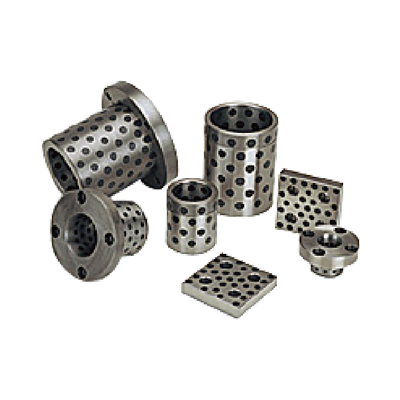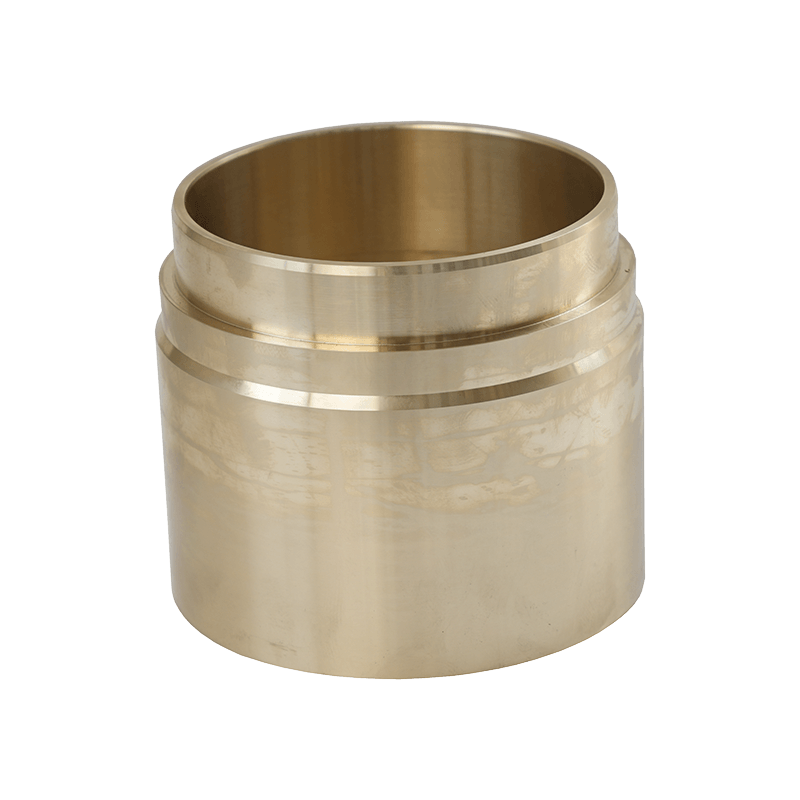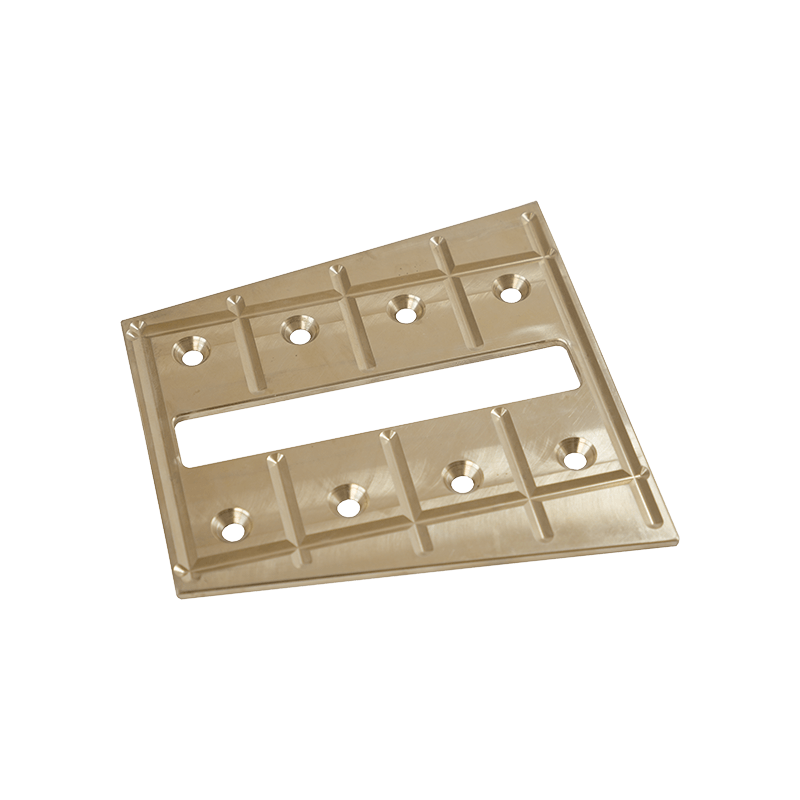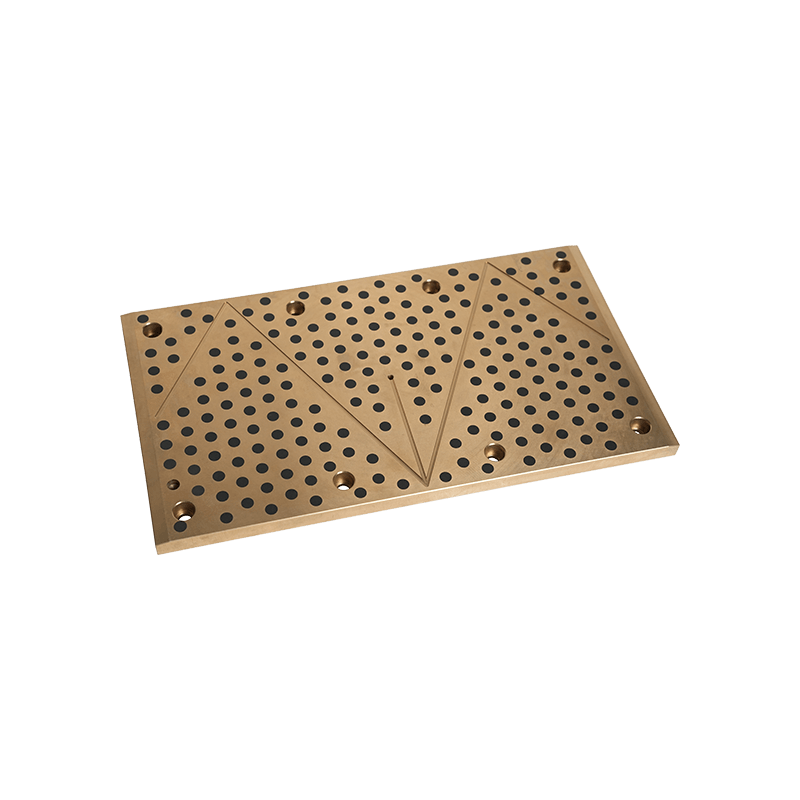Copper alloy self-lubricating bearings are renowned for their exceptional wear resistance and strong load-bearing capacity, making them highly suitable for demanding industrial applications. These bearings combine the inherent properties of copper alloys with self-lubricating additives such as graphite, molybdenum disulfide (MoS2), or PTFE, which provide low friction and reduce the need for external lubrication.
One of the primary factors contributing to the superior wear resistance of copper alloy self-lubricating bearings is the inclusion of solid lubricants embedded within the material. These lubricants—such as graphite or PTFE—release micro-layers of lubrication during operation. This creates a thin lubricating film on the bearing surface, which reduces direct metal-to-metal contact. By lowering friction, this mechanism prevents excessive wear and minimizes the risk of surface damage due to prolonged contact under load.
Copper itself is a material with a naturally high level of wear resistance. Copper alloys often exhibit excellent thermal conductivity, which helps dissipate heat generated during operation. This is critical in preventing thermal expansion or excessive wear caused by frictional heat, which could otherwise lead to material degradation over time.
Copper alloys typically have good hardness and the ability to absorb shocks, making them ideal for environments where there are repetitive loads or vibrations. This hardness provides resistance to surface wear, particularly in applications where the bearing faces undergo frequent contact with rotating shafts or other moving parts. Additionally, the incorporation of elements such as tin, zinc, and aluminum in copper alloys can further enhance the hardness and wear resistance.
Copper alloys are inherently resistant to corrosion, which is a significant contributor to material wear in many applications. This property extends the life of the bearing, especially in harsh environments where exposure to moisture, chemicals, or corrosive substances is common. For example, in marine or mining equipment, where bearings are exposed to salty water or abrasive dust, copper alloys resist corrosion and maintain their wear-resistant properties longer than other materials.
The self-lubricating copper alloy bearings exhibit lower friction coefficients compared to traditional bearings that require external lubrication. The solid lubricants within the alloy's structure ensure that friction is kept to a minimum, reducing wear on both the bearing and the shaft. This is particularly beneficial in applications that involve oscillating or slow-moving components, where traditional lubrication would be difficult to apply and maintain.

Copper alloy self-lubricating bearings are designed to withstand heavy loads and high-pressure conditions. The strength of copper alloys, particularly those with added elements like tin or lead, gives these bearings the ability to endure significant mechanical stresses without deforming or failing. Copper’s inherent ductility ensures that the material can absorb shock loads without cracking, making it suitable for both high-load and impact-heavy applications.
Copper alloy bearings often feature a porous structure or specialized grooves designed to evenly distribute the load across the bearing surface. This uniform load distribution reduces the concentration of stress at any single point, which can otherwise lead to early failure or localized wear. When the load is spread evenly, it results in a longer lifespan and improved reliability, especially in heavy-duty applications such as automotive engines, industrial machinery, or construction equipment.
The solid lubricants in copper alloy bearings not only assist in reducing friction but also enhance the bearing’s performance under mixed lubrication conditions, where some parts of the bearing may experience direct contact with the shaft. In such scenarios, copper alloy bearings can handle both boundary and mixed lubrication conditions, ensuring that they perform well even in environments with varying lubrication levels. This makes them more resilient to high-pressure conditions where full hydrodynamic lubrication might not always be possible.
Copper alloy self-lubricating bearings excel in applications that experience cyclic loading, which can wear down traditional bearings over time. Their ability to maintain performance under such conditions, without significant deterioration, is a key advantage. The embedded lubricants help to cushion the impact of each load cycle, minimizing frictional damage and allowing the bearing to perform effectively even under repeated stresses.
Copper alloy self-lubricating bearings offer a distinct advantage in terms of both wear resistance and strong load-bearing capacity. Their natural properties, combined with the added benefits of self-lubricating materials, ensure that they can withstand extreme operating conditions while maintaining high performance over extended periods. These bearings are particularly valuable in high-load, high-friction environments where traditional bearings might fail due to lack of lubrication or wear. Their ability to distribute loads evenly, resist wear, and operate under harsh conditions makes them an excellent choice for a wide range of industrial applications, ensuring long-term reliability and efficiency in mechanical systems.

 English
English Deutsch
Deutsch Español
Español русский
русский

 +0086-513-88690066
+0086-513-88690066




